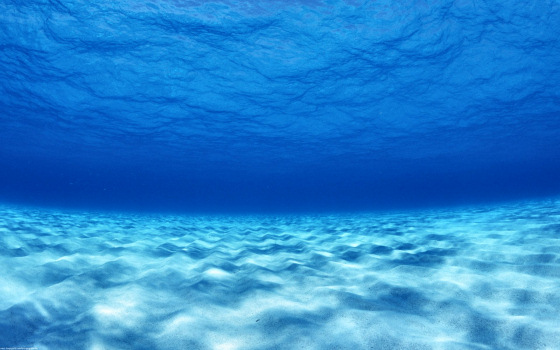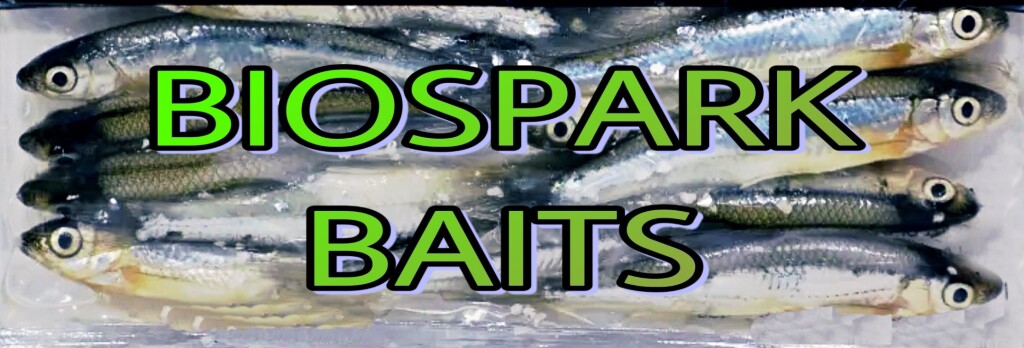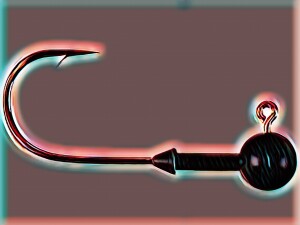 Everyone in the fishing industry is familiar with “ICAST”-it is the biggest trade show specific to the sport fishing industry. It is held every summer in Florida, and it is here where all the manufacturers officially reveal their offering for the upcoming season. What many don’t know is that there is a precursor to this show, it is called “X-CAST” and it is held in February at a different clandestine location each year. Only certain invited manufacturers are there, and this is the show where insiders get a true “sneak peek” at what is coming up. I was lucky to be sent there as a representative for my company since this year it was held relatively close to my house at the Super 8 Hotel and Convention Center in Motley, Minnesota.
Everyone in the fishing industry is familiar with “ICAST”-it is the biggest trade show specific to the sport fishing industry. It is held every summer in Florida, and it is here where all the manufacturers officially reveal their offering for the upcoming season. What many don’t know is that there is a precursor to this show, it is called “X-CAST” and it is held in February at a different clandestine location each year. Only certain invited manufacturers are there, and this is the show where insiders get a true “sneak peek” at what is coming up. I was lucky to be sent there as a representative for my company since this year it was held relatively close to my house at the Super 8 Hotel and Convention Center in Motley, Minnesota.
What is revealed there is typically kept under wraps until the big reveal at ICAST, but since my readership is only around 250,000, I figure I can let a few things out to get you all fired up for next year. There were many impressive offerings in all categories, I’m simply highlighting what I thought was the most extraordinary. Keep in mind, most of these new products won’t actually be available to consumers until sometime in 2025.
ELECTRONICS
Of course this category is what will get the most attention. Forward facing sonar has become status quo for most anglers in the past couple of years. Since its introduction, it has enabled anglers that who previously could not catch a Velcro ball while wearing wool gloves to not only be competitive but in some cases dominate fishing tournaments across the country. But for many it is just not enough to be able to spotlight every fish in the lake, as driving around from spot to spot looking for a school is time consuming. Fortunately, a new company, “Hi-Tek Fishexposure” has partnered with Space-X to cut down on the time from when you launch your boat to that first hook set. New technology allows Star-Link satellites to pinpoint concentrations of a particular fish species in a lake by scanning for DNA signatures. The satellites upload data to servers and receivers about every 4 hours. Now, even on a new lake, all you need to do is flip on your Fishexposure display, select “Bass”, and it will highlight large concentrations of bass on the built-in map with 1” contour increments. There are also settings for walleye, muskie, paddlefish, and many other popular freshwater species. The receiver, with a 14” display, will retail at a reasonable $4999.99, plus a small monthly subscription of $199.99. I think of how often I toss and turn in bed the night before a day on the water, constantly going over in my head where I should start. No more; I’ll sleep soundly knowing that my Fishexposure will point me towards the fish once I get to the ramp.
LINE
Just when we thought fishing line couldn’t get better, along comes Flourofuse, a new company out of Switzerland. The engineers there have figured how to use their particle accelerator to fuse hundreds of micro fluorocarbon strands into one filament, creating the thinnest, strongest line ever made. When finished, the line’s molecular structure is an analog of water, making this line 100% invisible underwater. Not “less-visible”—INVISIBLE! No more hassle with having to tie a fluorocarbon leader to the end of your braid, as this line, besides being 100% invisible underwater, has zero stretch. Since it is expected that all bass fishermen will only be using spinning rods going forward, Flourofuse only comes in one size, diameter equivalent to 8 lb. mono. But the breaking strength is around 60lbs, making this line essentially unbreakable and usable on a wide variety of rods. One caveat, this line can’t be cut with a regular scissors or knife. To demonstrate, President Klaus Vonn Trap took a break from his chocolate bar and pulled out a red-handled pocket knife. After studying the various blades and tools housed within, he folded out a special cutting blade made of obsidian. It cut through the line like it was chilled mayonnaise. Klaus assured me that they would be offering their own brand of obsidian line cutters, suggested retail around $199. Think of it, a line with unsurpassed sensitivity, yet it is invisible and unbreakable. Available at fine fishing tackle retailers late in 2024, retail price $229.99 for a 50 yard spool.
This is an underwater shot showing the invisibility of Fluorofuse; there are 5 strands in this picture:
HOOKS
Back in the day there were really only two choices of hooks: either Mustad or Eagle Claw. While fine choices back then, neither were really all that sharp, and the selection of styles was limited. We were all relieved when the Japanese companies brought out high quality hooks in the 80s. Now we had cutting points, needle points, saber points, the list goes on. Safe to say they were sharp, and came in a wide variety of designs and sizes. But all of us bass anglers are always looking for that one thing to give us an edge. Luckily, Yanagita Hooks has taken the premium hook category to new levels. Their Surodoi hooks are forged one at time with an aluminum-titanium alloy, finished with their proprietary “Tru-coat” finish, a new non-caloric silicon-based kitchen lubricant. It creates a surface 500 times more slippery than any other substance, allowing penetration with less than 4 ounces of pull applied. This all adds up to a hook that is light weight but virtually unbreakable and “un-dullable.”  Hook sets are hardly needed-when you get a bite, just start reeling! Yanagita president, Mike Yanagita, was taking a 4/0 hook and repeatedly dragging the point across a piece of granite, hard enough to leave lines on the ancient stone and then easily piercing it through a piece of dried humpback whale skin. Surodoi Hooks will only be available on line at yanagitahooks.com, where you can order their stock models [$99.99 for a pair] or use their “forgery” portion of the website to tweak existing designs, or even create your own. We’ve all had a time where we wish that a particular hook was just a little longer, or had a slightly different bend. Now the sky is the limit. Custom hooks will sell for $79.99 each. All Surodoi hooks have a lifetime guarantee for sharpness; if your Surodoi somehow becomes dull you simply need to mail it back to Tokyo and they will send you a new one, no charge.
Hook sets are hardly needed-when you get a bite, just start reeling! Yanagita president, Mike Yanagita, was taking a 4/0 hook and repeatedly dragging the point across a piece of granite, hard enough to leave lines on the ancient stone and then easily piercing it through a piece of dried humpback whale skin. Surodoi Hooks will only be available on line at yanagitahooks.com, where you can order their stock models [$99.99 for a pair] or use their “forgery” portion of the website to tweak existing designs, or even create your own. We’ve all had a time where we wish that a particular hook was just a little longer, or had a slightly different bend. Now the sky is the limit. Custom hooks will sell for $79.99 each. All Surodoi hooks have a lifetime guarantee for sharpness; if your Surodoi somehow becomes dull you simply need to mail it back to Tokyo and they will send you a new one, no charge.
BAITS
Since forward facing sonar is apparently now standard equipment on all bass boats, tackle manufacturers will continue to offer more and better selections specific to this style of fishing. Finesse style plastics rigged on sonar-reflecting jig head is what everyone wants. Biospark will lead the pack this year with their nano-powered plastics which pulse and twitch for up to 10 minutes thanks to the Nano-lithium battery strip found within each bait. Wait until you have fish spotlighted on your screen, then simply rig the bait on a jig head, give it a good pinch and it will become activated. The fins moves, the gills pulse, and the tail waves back and forth enticingly. The colors on these are truly amazing, and when in the water it is impossible to tell the difference between a Biospark bait and an actual minnow.  Once the bait is wet, the built-in micro scent pods activate, releasing a combination of amino acids and pheromones that will further commit any interested fish into eating it. Biospark baits will be initially offered in three sizes [2, 3, and 4 inch], and four colors [golden shiner, gizzard shad, rosy-faced dace, and stickleback]. Future designs will include goby, crawfish, and nightcrawler. These baits will be packaged individually and sell for $29.99 each, or buy the bulk pack for $499.99. If that sounds steep, rest assured that they come with a guarantee—if you return a Biospark bait that has been used but has no bite marks on it, you will receive a 10% discount on your next order!
Once the bait is wet, the built-in micro scent pods activate, releasing a combination of amino acids and pheromones that will further commit any interested fish into eating it. Biospark baits will be initially offered in three sizes [2, 3, and 4 inch], and four colors [golden shiner, gizzard shad, rosy-faced dace, and stickleback]. Future designs will include goby, crawfish, and nightcrawler. These baits will be packaged individually and sell for $29.99 each, or buy the bulk pack for $499.99. If that sounds steep, rest assured that they come with a guarantee—if you return a Biospark bait that has been used but has no bite marks on it, you will receive a 10% discount on your next order!
For anglers looking for something better in the jig head department, Metälürjigs from Calgary has you covered. No one uses lead any more, and many of us are now looking beyond tungsten. Their new Sharpshooter heads have a head made of osmium. For those of you without a Periodic Table at  hand, osmium weighs twice as much as a lead head the same size, and 25% more than a similar sized tungsten head. I talked with their rep, Brett Hart, who told me that due to their density, the osmium heads show up on a sonar screen like a laser pointer. He showed me a jig head in a commonly used weight, a 3/16 oz. It was smaller than heads I use for chasing bluegills and tommycods in the pond. He dropped it into my hand, it landed in my palm with an audible “thud”, and it almost hurt. He said, “You rig this with a Biospark Minnow, and pitch it into a school on your scope, it shows up so well you can pull it away from the small fish, get it in front of the big boys. When they hit, man it is like nothing you’ve felt before!” Sold in 3-packs in 3 sizes: 1/8 oz. [$75.00], 3/16 oz. [$90], and 1/4 oz. [$120].
hand, osmium weighs twice as much as a lead head the same size, and 25% more than a similar sized tungsten head. I talked with their rep, Brett Hart, who told me that due to their density, the osmium heads show up on a sonar screen like a laser pointer. He showed me a jig head in a commonly used weight, a 3/16 oz. It was smaller than heads I use for chasing bluegills and tommycods in the pond. He dropped it into my hand, it landed in my palm with an audible “thud”, and it almost hurt. He said, “You rig this with a Biospark Minnow, and pitch it into a school on your scope, it shows up so well you can pull it away from the small fish, get it in front of the big boys. When they hit, man it is like nothing you’ve felt before!” Sold in 3-packs in 3 sizes: 1/8 oz. [$75.00], 3/16 oz. [$90], and 1/4 oz. [$120].
Boats
Fiberglass bass boats will continue to dominate the market for the foreseeable future. No one that I spoke with had any plans to change the hull design of existing boats, with the exception of Ocean Woods Boats that had their new 25 foot QBH on display. Sporting twin 350s on the back, top speed is claimed to be around 120 MPH! Many lakes have a 40 MPH speed limit, but just think, the QBH goes from zero to forty in about 5.5 seconds, leaving those losers with their puny single 200 HP in your wake! While talking with Ocean Woods rep Matt Hooper, another attendee stared wide-eyed at the boat we were next to and said “That’s a twenty-footer!” Matt calmly replied “Twenty-five.”
An interesting trend from all boat manufacturers is the layout and storage. Since technology is creating opportunities for bigger and bigger limits of bass, let’s face it, the livewell found in most boats won’t have the capacity for a truly big bag. Where it used to be that a 20 lb. bag would guarantee a top three finish on any lake, nowadays that might not scratch top 10. We’ve been seeing 30 lb. limits becoming more common, and with all the new technology available, it is only a matter of time before we start seeing 40 lb. bags. Where to put all of these giant bass? The average bass boat livewell is around 31 gallons, and this is not enough space for a huge bag! Vinny Vega from Marcellus Boats thinks that the solution is to replace much of the storage with additional livewell space. He took a break from his five dollar milkshake to say, “Most of these guys are using one or two rods, and all the tackle they use will fit in a shirt pocket. Why dedicate all of that space for storage, let’s instead turn it into additional live well space—let give those big gals some room to roam!” Marcellus Boats feature roomy 57 gallon livewells, and additional space has been converted to coolers where anglers can store their energy drinks, KFC, and spare batteries for their GoPro cameras.
This only the tip of the iceberg. It is truly a great time to be an angler, especially a bass angler. There was so much more to see at X-Cast, like the spinning reels with 25:1 gear ratio, or the rods made of extruded magnesium filaments, but you’ll have to wait for the big reveal at I-Cast this summer to see it all. True insiders have indicated that if you think this is good, wait for 2026. You might not have to even leave your couch to catch a derby-winning bag!

